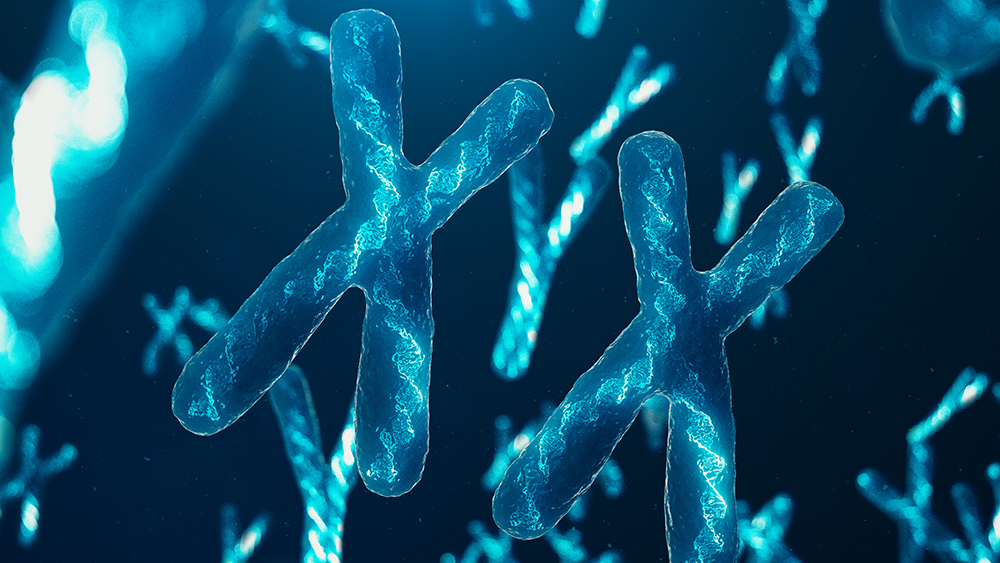Based on biblical chronologies, we can determine that the global Flood recorded in Genesis occurred about 4,500 years ago.1 After the Flood, the earth was repopulated by Noah’s three sons and their wives. So we should find genetic signatures of this timeline in human DNA. While a number of previous studies by both secular and creation scientists have supported this general timeline,2-3 a recent study using extensive newly available high quality DNA sequence data for the human Y-chromosome spectacularly confirms the earlier research and solidifies the Bible’s history of modern human origins.4
When the chronologies and genealogies of the Bible are analyzed, humans were created about 6,000 years ago as one original ancestral couple—Adam and Eve.1,5 However, the human genome went through a genetic bottleneck about 4,500 years when only the DNA from Noah’s three sons and their wives was used to repopulate the Earth. This bottleneck must also be taken into account when analyzing DNA. These Bible-based dates conflict with evolutionary speculation that claims modern humans did not arise until about 100,000 to 200,000 years ago from ancestors migrating out of Africa.
To help resolve the controversy, two scientists, one a molecular biologist and the other a statistician, downloaded newly available DNA sequence for the Y-chromosome that was more comprehensive and covered much longer contiguous DNA regions that had not existed previously. The Y-chromosome is particularly useful in studying human pedigrees and mutations because it has no chromosomal counterpart in the human genome with which to exchange genetic information in a process called recombination. When sperm and egg cells are formed in a person, the 22 autosome pairs (one derived from the father and one from the mother) will exchange DNA segments with each other. Because this does not occur with the Y-chromosome, it is more genetically stable and thus very useful in genetic clock studies.
In this current study, the authors note that if humans have actually been around for several hundred thousand years or more, they should have accumulated 8 to 59 times the amount of mutations that we currently observe in Y-chromosome DNA sequence. However, the researchers in this current study empirically demonstrate that we only observe about 4,500 years of mutation accumulation in the paternal ancestry contained in the record of the human Y chromosome.
In regards to the significance of these new results, the lead scientist in the study, Nathaniel Jeanson, stated in an interview with ICR staff,
(See references below referring to the previous maternal mutation rate studies Jeanson performed using mitochondrial DNA.6-7)
In summarizing the huge challenge this new study presents to the secular science community, Jeanson stated,
I’m anxious to see how the evolutionists try to dismiss this second, independent line of genetic evidence for the young-earth timescale. Not only do they have to explain why the data contradict evolution, they have to also explain why the data are such a tight match with the predictions of Biblical creation. And they have to do it both for DNA inherited through females, and now also for DNA inherited through males.
Indeed, these new results are, not only a sound dismissal of evolutionary speculation, but a huge confirmation for the recent origins of mankind as revealed in the literal history of the Bible given in Genesis.
References
1. Hardy, C. and R. Carter. 2014. The biblical minimum and maximum age of the earth. Journal of Creation. 28 (2): 89-96.
2. Tomkins, J. P. 2015. Genetic Clocks Verify Recent Creation. Acts & Facts. 44 (12): 9-11.
3. Tomkins, J. P. 2019. Six Biological Evidences for a Young Earth. Acts & Facts. 48 (5):10-13.
4. Jeanson, N. T. and A. D. Holland. 2019. Evidence for a Human Y Chromosome Molecular Clock: Pedigree-Based Mutation Rates Suggest a 4,500-Year History for Human Paternal Inheritance. Answers Research Journal. 12 (2019) 393-404.
5. Johnson, J. J. 2008. How Young Is the Earth? Applying Simple Math to Data in Genesis. Acts & Facts. 37 (10): 4-5.
6. Jeanson, N. T. 2015. A Young-Earth Creation Human Mitochondrial DNA “Clock”: Whole Mitochondrial Genome Mutation Rate Confirms D-Loop Results. Answers Research Journal. 8:375–378.
7. Jeanson, N. T. 2016. On the Origin of Human Mitochondrial DNA Differences, New Generation Time Data Both Suggest a Unified Young-Earth Creation Model and Challenge the Evolutionary Out-of-Africa Model. Answers Research Journal. 9: 123–130.
Dr. Tomkins is Life Sciences Director at the Institute for Creation Research and earned his doctorate in genetics from Clemson University.














